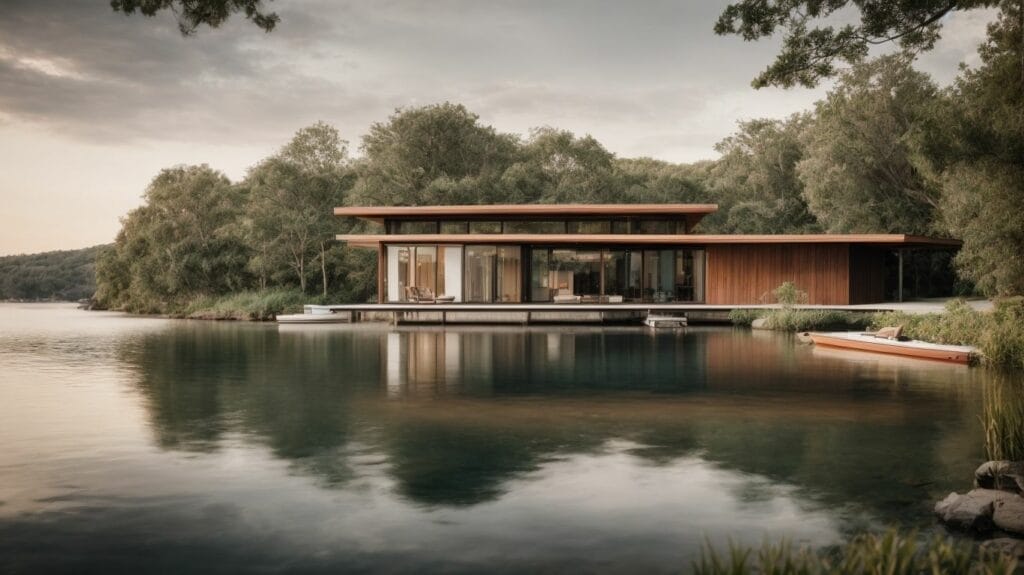A boat dock is a structure that provides a safe and stable platform for boats to dock and moor. It is typically built along a waterfront property and is essential for boat owners to easily access and store their boats. The type of boat dock chosen depends on various factors, and there are many creative ideas to enhance its functionality and aesthetics. With proper maintenance, a boat dock can last for many years to come.
There are five main types of boat docks, including:
- Floating dock – best for fluctuating water levels.
- Stationary dock – suitable for calm waters and heavy boats.
- Pipe dock – a cost-effective option for shallow waters.
- Cantilever dock – ideal for deep waters and easy boat access.
- Piling dock – recommended for rough waters and large boats.
When choosing a boat dock, it is crucial to consider factors such as water conditions, boat size and weight, budget, and maintenance requirements. This will help in determining the best type of dock for your property.
For lakefront properties, a simple floating dock or a stationary dock with a boat lift can provide easy and convenient access to the water. For riverfront properties, a durable piling dock with a canopy for shade can withstand strong currents and provide protection from the sun. Oceanfront properties may require a more robust and sturdy dock, such as a piling dock with a heavy-duty boat lift, to withstand rough waves and strong winds. For small or narrow waterfront properties, a compact and versatile floating dock or pipe dock can maximize the use of space.
To enhance your boat dock, consider adding additional features such as a boat lift for easy boat storage, lighting for safety and ambiance, a seating area for relaxation, and water toys and accessories for added fun. Regular maintenance is crucial for preserving the longevity of your boat dock, and some tips include regular cleaning and inspections, protecting against weather and water damage, and properly securing your boat.
In conclusion, a boat dock is a valuable addition to any waterfront property. With the right type, creative ideas, and proper maintenance, a boat dock can provide years of enjoyable boating experiences.
Key Takeaways:
What Is a Boat Dock?
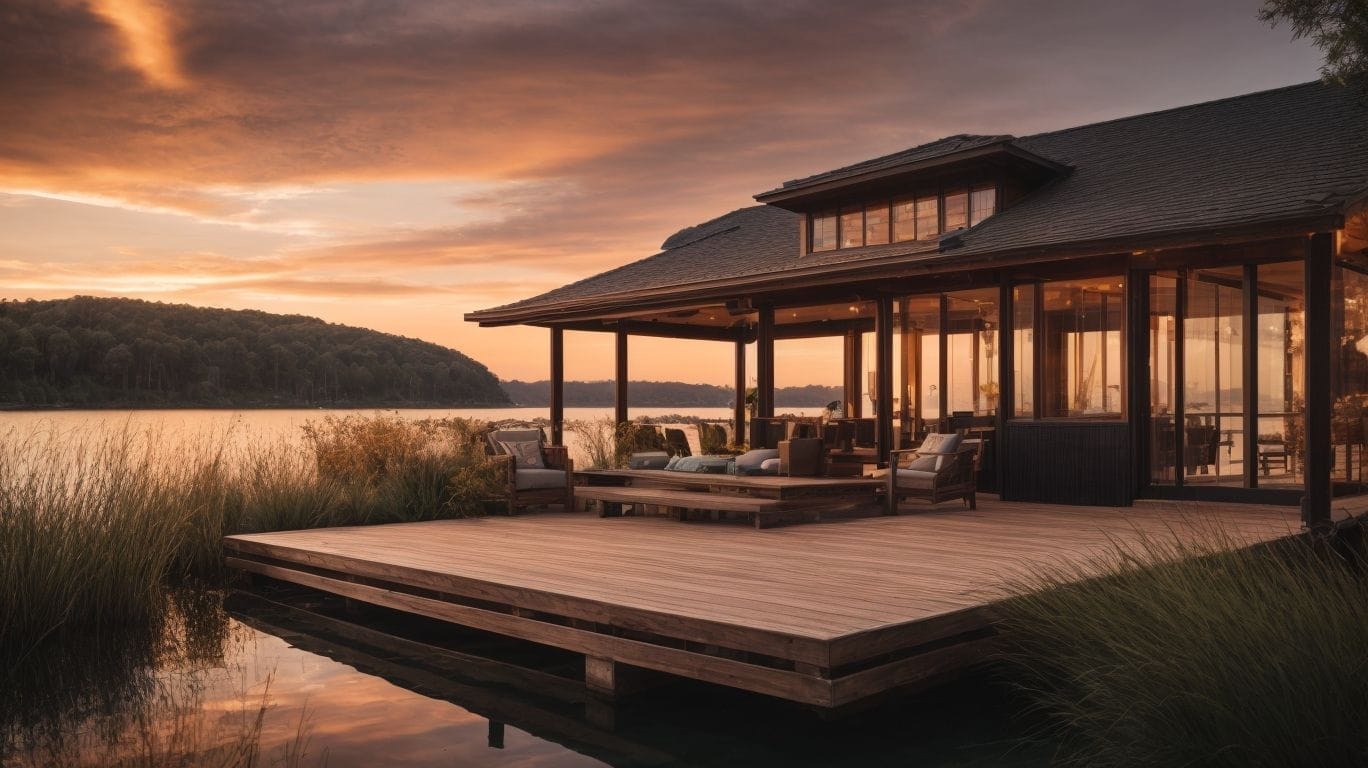
Photo Credits: Jetsetlegion.Com by Nathan Young
A boat dock is a structure built along the water’s edge to provide a stable platform for boats to be moored or stored. It typically consists of a wooden or metal framework supported by pilings or floats. Boat docks can vary in size and design, depending on the specific needs and preferences of the boat owner. They serve as a convenient and secure location for boarding and disembarking from boats, as well as a place for maintenance and storage.
Boat docks are commonly found in marinas, private residences, and commercial waterfront areas.
Types of Boat Docks
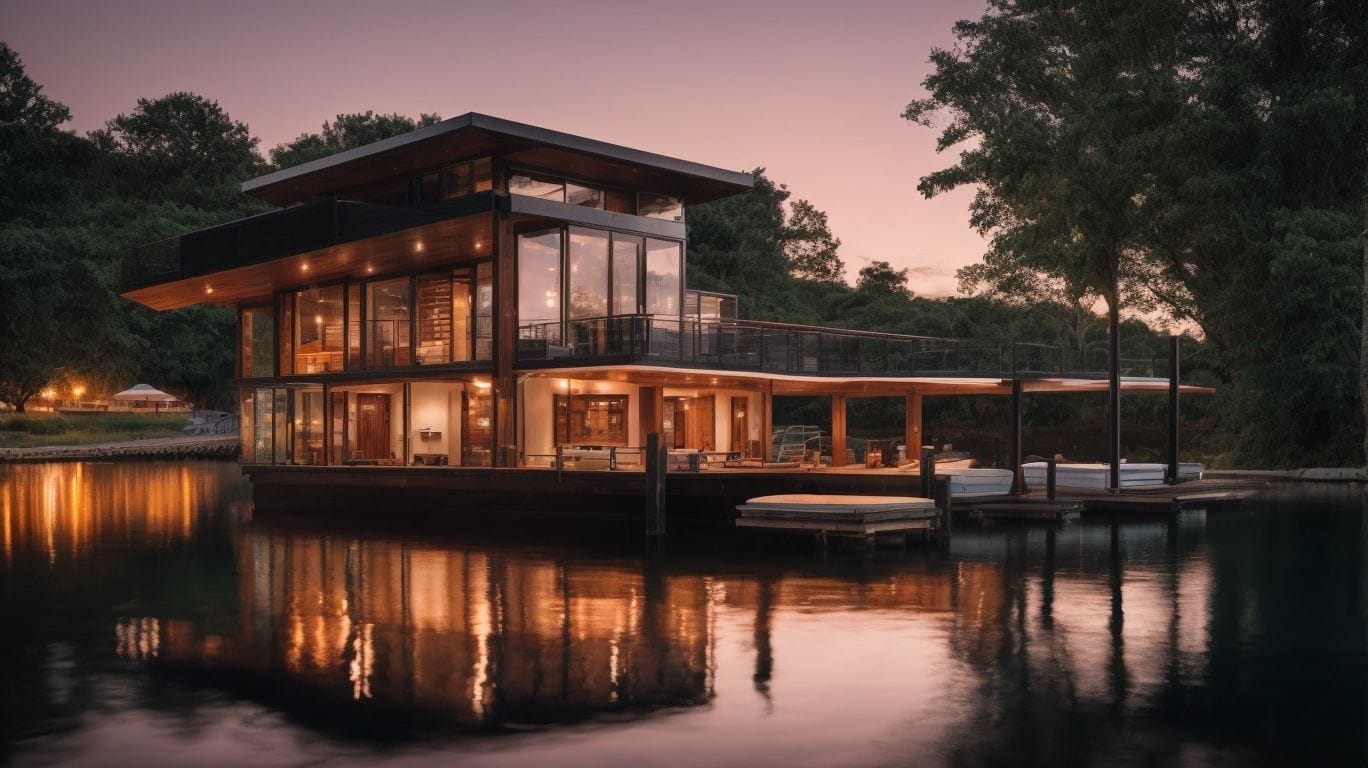
Photo Credits: Jetsetlegion.Com by Brian Wilson
When it comes to choosing a boat dock, there are various options available to suit different needs and preferences. In this section, we will discuss the different types of boat docks and what makes each one unique. From floating docks that adjust with water levels to stationary docks that provide a stable platform, we’ll cover the pros and cons of each type. Get ready to discover the perfect boat dock for your waterfront property.1. Floating Dock
A floating dock is a buoyant boat dock that rests on the surface of the water and can adjust to changing water levels. If you are considering a floating dock, here are some steps to keep in mind:
- Assess your water conditions to determine if a floating dock is the best option for you.
- Evaluate the size and weight of your boat to ensure that the dock can support it.
- Consider your budget and compare prices of different floating dock options.
- Think about the maintenance required for the dock and choose a low-maintenance option.
When selecting a floating dock, it is important to choose a reputable manufacturer that offers quality and durability. You may also want to consider adding features such as a boat lift, lighting, seating area, and water toys to enhance your floating dock experience. Regular cleaning and inspections, as well as protecting against weather and water damage, are crucial for maintaining your floating dock in good condition.
2. Stationary Dock
A stationary dock is a permanent structure that remains in place and does not move with the water. When looking into a stationary dock for your waterfront property, there are various elements to take into account:
- Water conditions: Evaluate the water depth, tides, and currents to ensure the dock can withstand the specific conditions.
- Boat size and weight: Select a stationary dock that can support the size and weight of your boat.
- Budget: Consider the expenses of installation, maintenance, and any additional features you may want to include.
- Maintenance: Determine the level of upkeep required for the dock and whether you have the means to maintain it.
By considering these factors, you can choose the appropriate stationary dock for your needs and have a sturdy and dependable structure for your boat.
3. Pipe Dock
A pipe dock is a type of boat dock that is built utilizing pipes as the main structural elements. It is composed of a series of vertical pipes that are driven into the bottom of the water and connected with horizontal pipes to create a stable platform. Pipe docks are renowned for their durability, versatility, and ease of installation. They are suitable for a variety of water conditions, including those with fluctuating water levels. The use of pipes allows for customization and adjustments to suit specific needs. When selecting a pipe dock, it is important to consider factors such as water conditions, boat size and weight, budget, and maintenance requirements.
4. Cantilever Dock
A cantilever dock is a type of boat dock that extends out over the water without the need for additional supports. Here are the steps to consider when installing a Cantilever Dock:
- Determine the desired length and width of the dock based on your boat’s size and the available space.
- Choose the materials for the dock, such as aluminum or composite, considering durability and maintenance requirements.
- Ensure proper anchoring of the dock to secure it in place and prevent shifting or movement.
- Consider adding features like cleats, bumpers, and ladders for convenience and safety.
- Regularly inspect and maintain the dock, checking for any signs of damage or wear and tear.
For optimal performance and longevity, it is recommended to consult with professionals experienced in Cantilever Dock installation.
5. Piling Dock
A piling dock is a type of boat dock that utilizes vertical pilings driven into the waterbed to provide support and stability. Here are the steps involved in constructing a piling dock:
- Survey the waterbed to determine the optimal location for the pilings.
- Install the pilings by driving them into the waterbed using specialized equipment.
- Attach horizontal beams to the pilings to create the framework of the dock.
- Add decking material, such as wood or composite, to create the walking surface of the piling dock.
- Install any additional features, such as boat lifts, lighting, or seating areas.
Pro-tip: To ensure the longevity of your piling dock, regularly inspect and maintain the pilings for any signs of damage or deterioration.
Factors to Consider when Choosing a Boat Dock
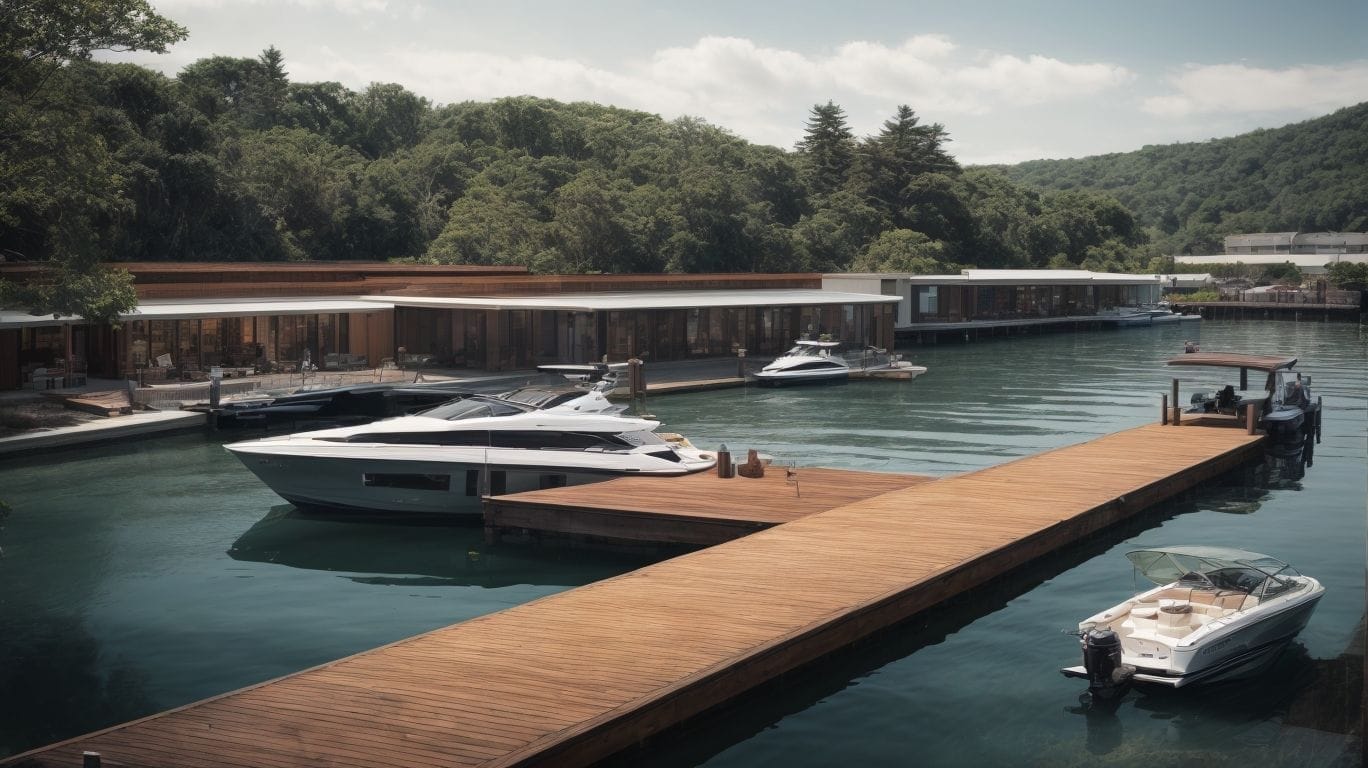
Photo Credits: Jetsetlegion.Com by Albert Davis
When it comes to choosing a boat dock, there are several important factors to consider. Each dock should be tailored to fit the specific needs and circumstances of the boat owner. In this section, we will discuss four main factors that should be taken into account when selecting a boat dock. These include the water conditions where the dock will be located, the size and weight of your boat, your budget, and the maintenance requirements for different types of docks. By understanding these factors, you can make an informed decision and choose the best boat dock for your needs.1. Water Conditions
When selecting a boat dock, it is essential to take into account the water conditions to ensure the dock’s stability and longevity.
- Evaluate the water depth to determine the appropriate dock height.
- Consider the wave action, currents, and tides when choosing a dock design that can withstand these conditions.
- Take into consideration freeze-thaw cycles in colder climates and select a dock material that can withstand the expansion and contraction.
- Factor in the water clarity and potential debris to determine the maintenance requirements for your dock.
Did you know that a poorly designed dock can be damaged by strong winds and rough waters?
2. Boat Size and Weight
When selecting a boat dock, it is essential to consider the size and weight of your boat to ensure safety and functionality. Here are some steps to follow:
- Identify your boat’s dimensions and weight.
- Check the weight capacity and dimensions of various dock types.
- Take into account any potential upgrades or changes in boat size.
- Consult with dock manufacturers or experts for their recommendations.
- Compare the gathered information to choose a dock that can effectively support your boat.
Pro-tip: It is always advisable to choose a dock with a higher weight capacity than the actual weight of your boat to accommodate any additional equipment or passengers.
3. Budget
Considering your budget is an essential factor when choosing a boat dock. Here are some steps to help you make a budget-conscious decision:
- Research: Gather information about different types of boat docks and their price ranges.
- Determine your needs: Assess your specific requirements, such as the size and weight of your boat, to narrow down the options.
- Set a realistic budget: Determine a budget that fits within your financial capabilities and the available options.
- Compare prices: Shop around and compare prices from different suppliers to find the most affordable option.
- Consider long-term costs: Don’t just look at the initial cost, but also factor in maintenance and repair expenses for each type of dock.
Here’s a true story: John was on a tight budget but needed a boat dock. He took the time to research and compare prices. By setting a budget and considering long-term costs, he found an affordable stationary dock that met his needs perfectly. John’s careful planning allowed him to enjoy his boat dock without overspending.
4. Maintenance
Regular maintenance is crucial for the longevity and functionality of your boat dock. Here are some essential steps to keep in mind:
- Inspect the dock regularly for any signs of damage or wear.
- Clean the dock regularly to remove dirt, debris, and algae.
- Check and tighten any loose bolts or hardware.
- Perform routine maintenance on the dock’s flotation system to ensure it is in good condition.
- Promptly repair any damages to prevent further deterioration.
Pro-tip: Applying a protective coating or sealant can help extend the lifespan of your boat dock and protect it from harsh weather conditions.
Boat Dock Ideas for Different Waterfront Properties

Photo Credits: Jetsetlegion.Com by Harold Flores
When it comes to building a boat dock, there are various factors to consider, including the type of waterfront property you have. Each type of waterfront property offers unique challenges and opportunities for dock design. In this section, we will discuss boat dock ideas for different types of waterfront properties, such as lakefront, riverfront, oceanfront, and small or narrow waterfront properties. Whether you’re looking for functionality, aesthetics, or a combination of both, there are plenty of ideas to inspire your boat dock design.1. Lakefront Property
Lakefront properties present unique considerations when it comes to selecting a boat dock. To help you choose the right dock for your lakefront property, follow these steps:
- Assess the water conditions, including depth, currents, and fluctuations.
- Consider the size and weight of your boat to ensure the dock can support it.
- Establish a budget that covers the dock’s cost, installation, and any necessary permits.
- Take into account the maintenance requirements of different dock materials, such as wood or aluminum.
Pro-tip: Seek advice from a professional dock builder who specializes in lakefront properties to ensure you make the best choice for your specific needs and preferences.
2. Riverfront Property
Riverfront properties offer unique opportunities for boat dock design and functionality. Here are steps to consider when planning a boat dock for a riverfront property:
- Assess the water conditions: Determine the water depth, current strength, and any potential hazards.
- Consider boat size and weight: Choose a boat dock that can accommodate your boats and provide stability.
- Set a budget: Determine your budget for the dock construction, maintenance, and any additional features.
- Plan for maintenance: Factor in the regular cleaning, inspections, and repairs required for a riverfront dock.
A family with a riverfront property in Tennessee installed a stationary dock that could handle their 30-foot pontoon boat. They researched the water conditions, hired a reputable dock builder, and regularly maintained their dock. They enjoyed peaceful afternoons fishing and hosting gatherings on their beautiful riverfront property.
3. Oceanfront Property
When considering an oceanfront property for your boat dock, there are a few key factors to keep in mind:
- Check local regulations: Research any specific regulations or permits required for constructing a boat dock in oceanfront areas.
- Consider water conditions: Oceanfront waters can be rough, so choose a boat dock design that can withstand waves, tides, and currents.
- Choose durable materials: Opt for materials that can withstand the corrosive effects of saltwater, such as stainless steel or aluminum.
- Secure anchoring: Ensure the boat dock is securely anchored to withstand the strong ocean currents and prevent damage or detachment.
- Provide protection: Consider installing bumpers or fenders to protect your boat from potential damage caused by waves or boat traffic.
4. Small or Narrow Waterfront Property
A small or narrow waterfront property presents unique challenges when it comes to selecting a boat dock. Here are some considerations for choosing the right dock for such properties:
- Space optimization: Opt for a compact dock design that maximizes the available space without compromising functionality.
- Modular options: Look for modular dock systems that can be customized to fit the specific dimensions of the property.
- Versatility: Choose a dock that can accommodate different watercraft sizes and types, allowing for flexibility in usage.
- Accessibility: Prioritize a dock design that provides easy access to the water, ensuring convenience for launching and docking boats.
- Stability: Select a dock with sturdy construction and anchoring systems to withstand the challenges of small or narrow water bodies and changing water levels.
By considering these factors, boat owners can find a suitable dock solution for their small or narrow waterfront property.
Additional Features to Enhance Your Boat Dock

Photo Credits: Jetsetlegion.Com by Jose Hall
In addition to providing a safe and convenient place to dock your boat, a boat dock can also serve as a versatile and enjoyable space for relaxation and recreation. In this section, we will discuss some additional features that can enhance your boat dock and make it a more enjoyable and functional space. From boat lifts to lighting, seating areas to water toys and accessories, there are many options to consider when designing your ultimate boat dock setup.1. Boat Lift
A boat lift is a valuable addition to any boat dock, allowing for easy raising and lowering of your boat in and out of the water. Here are the steps to follow when installing a boat lift:
- Determine the appropriate boat lift capacity by assessing your boat’s weight and size.
- Choose the type of boat lift that best fits your needs, such as a vertical lift or a floating lift.
- Consider the water conditions, including tide levels and fluctuation, to ensure the boat lift can handle them.
- Budget for the installation and ongoing maintenance costs of the boat lift.
- It is recommended to hire a professional for proper installation and to ensure the boat lift meets all safety requirements.
Pro-tip: Regularly inspect and maintain your boat lift to extend its lifespan and ensure safe usage.
2. Lighting
To enhance your boat dock, incorporating lighting is essential for both safety and aesthetics. Here are steps to effectively add lighting to your boat dock:
- Assess the area: Determine where lighting is needed the most, such as along walkways or at the entrance.
- Choose the right fixtures: Opt for durable and waterproof fixtures specifically designed for outdoor use.
- Consider the type of lighting: Decide between options like LED lights for energy efficiency or solar-powered lights for sustainability.
- Install the lighting: Follow manufacturer instructions to properly install the lighting fixtures in the desired locations.
- Test and adjust: After installation, test the lighting to ensure it illuminates the dock adequately. Make any necessary adjustments for optimal visibility.
In the early nineteenth century, gas lanterns were commonly used for dock lighting. These lanterns provided a warm and inviting glow, guiding sailors safely to their destinations. As technology advanced, gas lanterns were replaced by the electric lights we use today. The evolution of dock lighting showcases the continuous efforts to improve safety and enhance the overall boating experience.
3. Seating Area
To create a comfortable seating area on your boat dock, follow these steps:
- Choose the perfect seating: Opt for weather-resistant materials like teak or aluminum, with cushions made of marine-grade fabric for durability.
- Consider the layout: Arrange the seating in a way that maximizes the view and creates a cozy atmosphere. Incorporate benches, chairs, or built-in seating options.
- Add shade: Install an umbrella or a retractable canopy to provide shade during hot days and protect from the sun’s harmful rays.
- Create a storage solution: Include storage benches or compartments to keep cushions, life jackets, and other boating essentials neatly tucked away.
- Add accessories: Enhance the seating area with tables, drink holders, and side tables for convenience and comfort.
- Lighting: Install ambient lighting such as LED lights or solar-powered options to create a pleasant atmosphere for evening gatherings.
4. Water Toys and Accessories
When it comes to enhancing your boating experience, having the right water toys and accessories can make a big difference. Here are some steps to consider when choosing water toys and accessories for your boat dock:
- Assess your needs: Determine the activities you enjoy and the type of water toys that would complement them, such as inflatable rafts, kayaks, or paddleboards.
- Consider storage: Take into account the available space on your boat dock for storing water toys. Look for options that can be easily stored or hung to optimize space.
- Water safety: Invest in essential safety equipment like life jackets, first aid kits, and throw ropes to ensure a safe boating experience.
- Fishing gear: If you enjoy fishing, consider adding fishing equipment like fishing rods, tackle boxes, and nets to your collection of water toys and accessories.
- Entertainment: Enhance your time on the water with entertainment options like waterproof speakers, coolers, and lounging floats.
By considering your needs, storage options, safety, fishing gear, and entertainment, you can choose the right water toys and accessories to maximize your enjoyment on the boat dock.
Tips for Maintaining Your Boat Dock
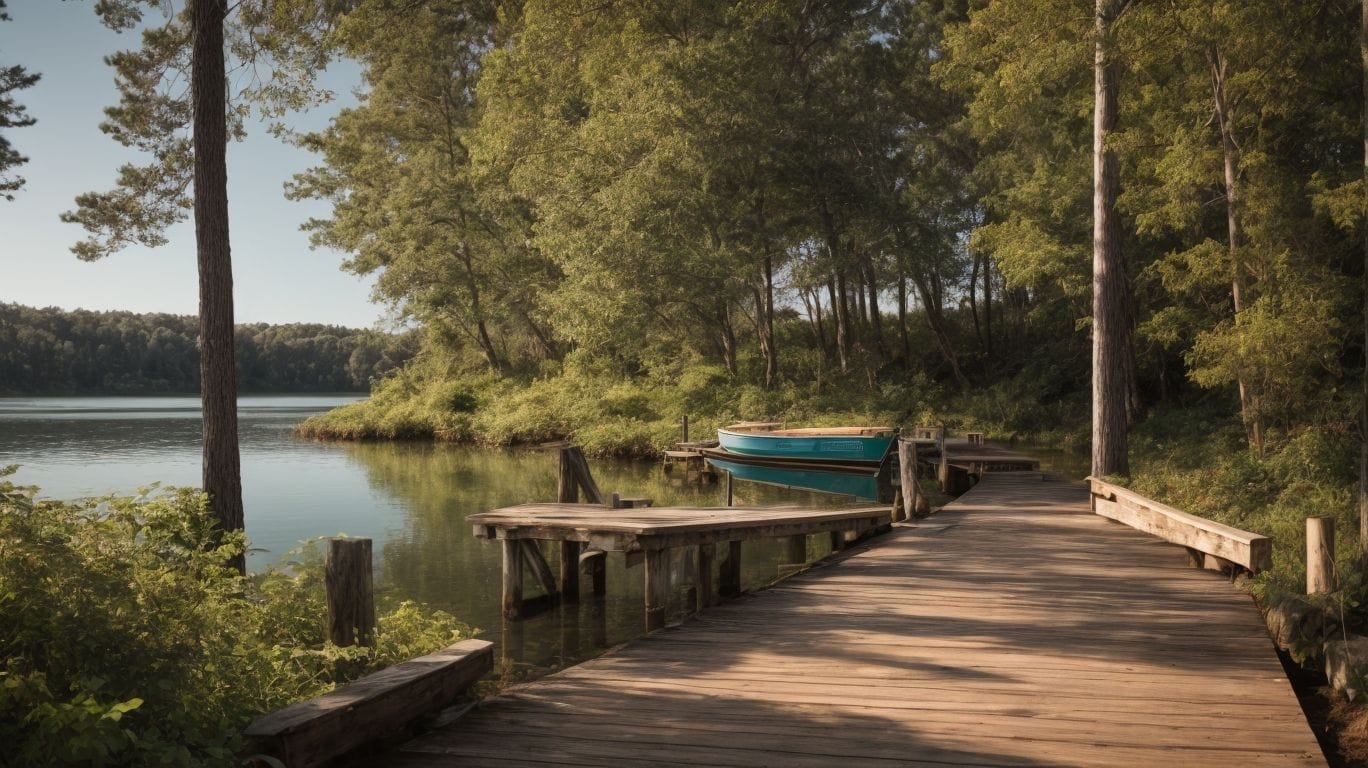
Photo Credits: Jetsetlegion.Com by Ralph Baker
Keeping your boat dock in top condition is crucial for ensuring its longevity and safety. In this section, we will discuss some essential tips for maintaining your boat dock. From regular cleaning and inspections to protecting against weather and water damage, each aspect plays a vital role in keeping your dock in optimal condition. Don’t overlook these maintenance tasks, as they can save you time and money in the long run.1. Regular Cleaning and Inspections
Regular maintenance and inspections are crucial for ensuring the longevity and safety of your boat dock. Here is a list of steps to follow:
- Remove debris: Clear any leaves, branches, or other debris from the surface of the dock.
- Clean with mild soap: Use a gentle soap and water solution to clean the dock, removing dirt and grime.
- Inspect for damage: Thoroughly examine the dock for any signs of wear, rot, or structural issues.
- Repair or replace damaged parts: If you notice any damage, address it promptly by repairing or replacing the affected components.
- Tighten loose hardware: Check for loose bolts or screws and tighten them to ensure stability.
- Check electrical connections: If your dock has electrical components, inspect the connections for any signs of damage or corrosion.
- Apply protective coatings: Depending on the material of your dock, consider applying a protective coating to prevent damage from UV rays and water exposure.
By regularly cleaning and inspecting your boat dock, you can ensure its proper functioning and extend its lifespan.
2. Protecting Against Weather and Water Damage
To protect against weather and water damage, follow these steps:
- Choose durable materials for your boat dock, such as pressure-treated wood or composite decking.
- Apply a waterproof sealant to protect against moisture and prevent rotting.
- Install proper drainage systems to divert water away from the dock.
- Regularly inspect and repair any cracks or damages in the dock structure.
- Invest in dock fenders or bumpers to prevent damage from boats or other watercraft.
- Consider adding a roof or canopy to provide shelter from rain and sun exposure.
Remember, proper maintenance and timely repairs are essential for ensuring the longevity and safety of your boat dock. Regularly check for any signs of wear and address them promptly to prevent further damage.
3. Proper
To ensure proper maintenance of your boat dock, follow these steps:
- Regular Cleaning and Inspections: Remove debris and check for any damage or wear. Clean with appropriate products to prevent algae or mold growth.
- Protecting Against Weather and Water Damage: Apply a waterproof sealant and paint to protect against water and UV damage. Install bumpers and fenders to prevent scratches from boats.
- Proper Docking Procedures: Teach proper docking techniques to prevent damage to the dock and boat. Use cleats and dock lines to secure the boat properly.
- Seasonal Maintenance: Adjust dock height according to water levels. Remove the dock from the water during winter or storms to prevent damage from ice or rough waves.
